Prune’s Cold Candied Oranges
Some cookbooks possess that magical gift that makes you feel as if the author is actually speaking directly to you in your very own kitchen.
“Prune” (Random House) takes a different tack. In her new cookbook of which I received a review copy, Chef Gabrielle Hamilton, owner of New York’s beloved Prune restaurant, gives you the impression that she’s talking directly to her crew in the kitchen. The delightful part is that you feel as if you’re scrunched in a corner, ease-dropping on everything that goes on there, from the prep to the service.
Possessing an MFA in fiction writing, Hamilton is a proven storyteller. Besides her singular voice, the recipes come with drip spots on the pages, as well as notes scribbled on torn pieces of tape that look as if they’re stuck to the pages.
For a recipe for “Asparagus with Sable Butter,” Hamilton scrawls in black ink, “I can’t believe I have to say this, but please arrange on the plate with all the tips facing the same direction — not in a chaotic jumble.”
For a recipe for “Spicy Lemonade,” she admonishes, “Spicy, but not deadly, people. Taste your finished product!”
And on it goes. It’s honesty and directness from a chef known for her deft way with simplicity. Who else could dare offer a plate of canned sardines with Triscuits, Dijon mustard and corichons on a menu and have it grow into a must-order?
That’s why I was intrigued by “Cold Candied Oranges.” It’s not much more involved than Chez Panisse’s audacious desserts of nothing but fresh, whole fruit on a plate.
Hamilton takes whole oranges, cuts attractive notches in them with a citrus peeler, then candies them slowly in sugar syrup until they become slightly translucent with a glassy outer shell.
If your sugar syrup starts to evaporate to much during the process, just add a tablespoon or so of water to the pot, which I make a note of in the recipe below.
The oranges are stored in their syrup for a day in the fridge. Then, they’re served ice cold — whole.
They have a simple yet somehow dramatic look when they’re set on the table. The rind has turned soft, sweet and chewy so it’s completely edible. It offers an edge of bitterness that’s been mostly tempered by the sugaring process. The flesh is still plenty succulent inside.
It’s a little like enjoying a bright, fresh marmalade that’s somehow juicy, too.
Eaten on a sultry New York summer kind of day, it might just be the best thing ever, too.
Cold Candied Oranges
(Serves 4)
4 small firm juicy seedless oranges with thin skins
1 cup sugar
1 cup water
Prepare a pot of boiling water, just large enough to hold the oranges submerged.
Wash and dry the oranges and channel them attractively from stem to navel at 1/2-inch intervals. Simmer the oranges, turning and dunking them regularly to be sure they cook evenly for approximately 25 minutes, until they swell and soften but do not collapse or split. Include the long threads of zest.
Remove the oranges from the simmering water with a spider and throw away blanching water.
In a stainless steel pot, combine the sugar and water and stir it well to dissolve the sugar. Bring to a boil over medium-high heat and allow to boil 10 minutes.
Simmer the oranges in the syrup for approximately 30 minutes, stirring and rotating and dunking frequently until a high gloss and kind of translucence occur. They float and will candy unevenly if you don’t attend to them. If the liquid starts to evaporate too much before your oranges are done, just add a tablespoon or more of water to the pot, and stir to combine.
Cool oranges in their own syrup for a full 24 hours before serving. This kind of “cures” them.
Serve straight from the refrigerator, very cold. One whole orange, a little of its own syrup. Waiters will set fork and knife and spoon at table.
Adapted from “Prune” by Gabrielle Hamilton
More Recipes That Showcase Oranges: Scallops with Caramel-Orange Sauce
And: Halibut and Spinach with Orange-Pine Nut Vinaigrette

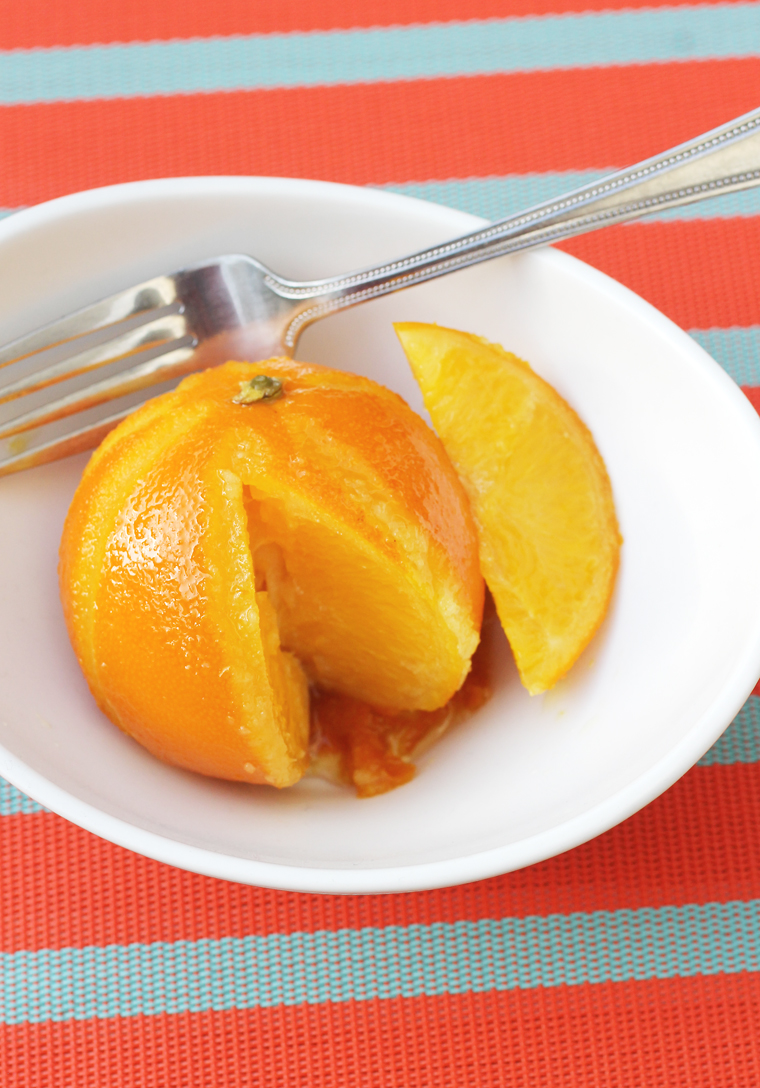
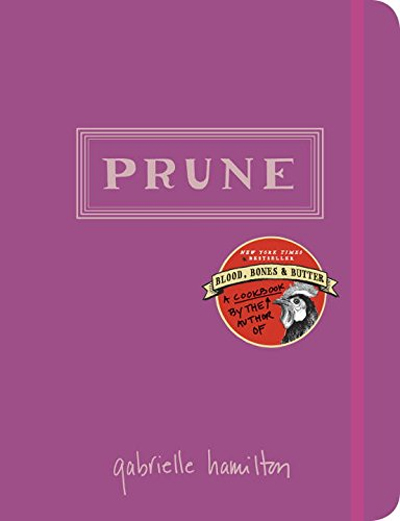
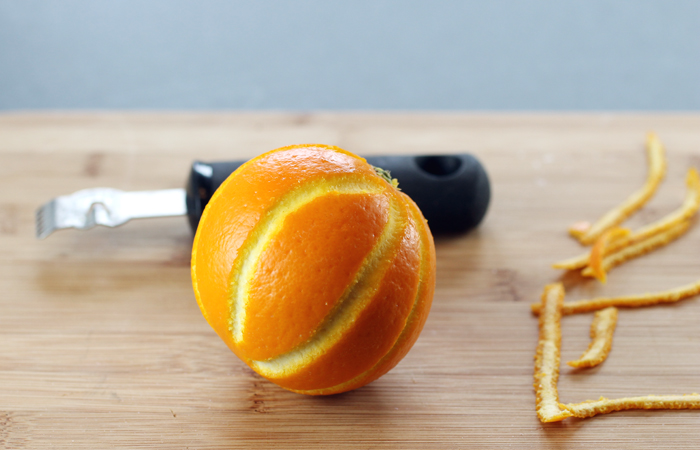
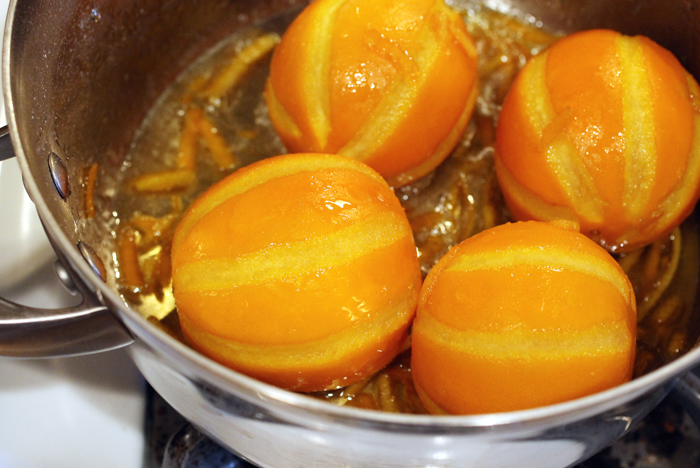
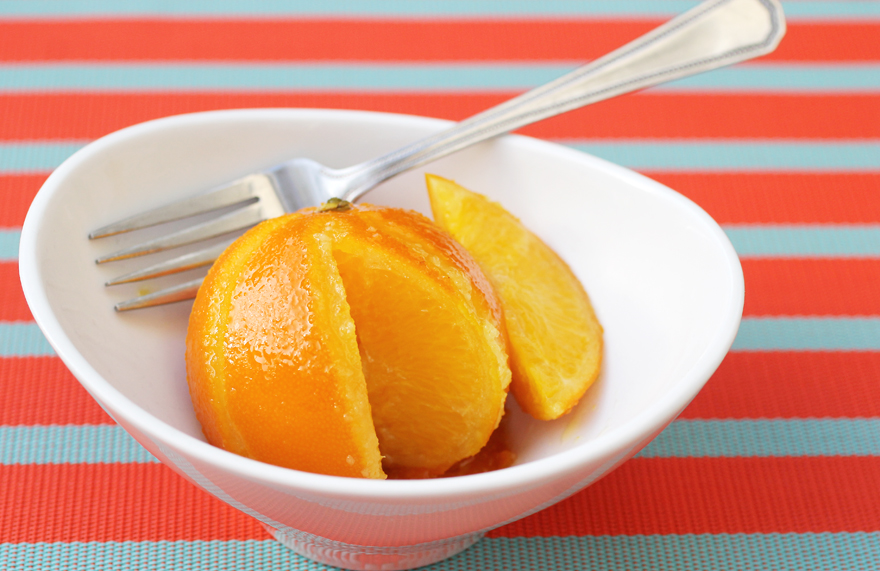
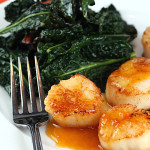
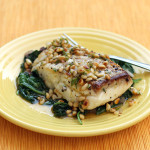
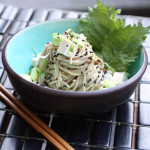
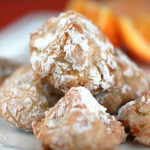
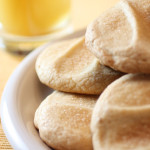
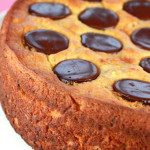
A very original dessert! I bet those candied oranges taste heavenly.
Cheers,
Rosa
I’ve heard so much about this book. This would be so perfect on a warm summer day!
I am going to make these, for sure. Looks fresh and refreshing. And I have a tree full of oranges!!
P.S. Bet this would be great with Meyer lemons (which I also have growing in the back yard, as does Carolyn).
This sounds so interesting. What happens to the inside, does it get all jammy? Or does it retain some of the orange flesh feel? Her cookbook sounds so wacky and fun! I want to flip through it after the way you described it!
Ben: The interior of the orange retains its fleshy and very juicy quality, though slightly more compacted in texture. It’s a really fun book — one you just want to read page by page.
These candied orange sound delicious…and so easy to make…very pretty as well.
Have a great week Carolyn 🙂
These are perfect for all those “cuties” out there! And how pretty they would be on a table.
everyone and her mother is talking about this book, so i clearly need to check it out. these look so fun and tasty!
So I made these the other day (thank you for bringing them to my attention). I probably overcooked them just a bit, but they still taste good. Only problem is once I’ve finished the flavor stays in my mouth and get’s stronger until I get this weird burning sensation. I can’t figure it out, does the cooking or the sugar somehow up the acid content?
Arika: I’m not sure what could have caused that. I didn’t have that sensation when I ate them. They are pretty sweet after cooking with just a slight touch of acidity. Could you possibly have sensitive gums? I know that certain toothpastes and very acidic foods can wreck havoc when gums are very sensitive.